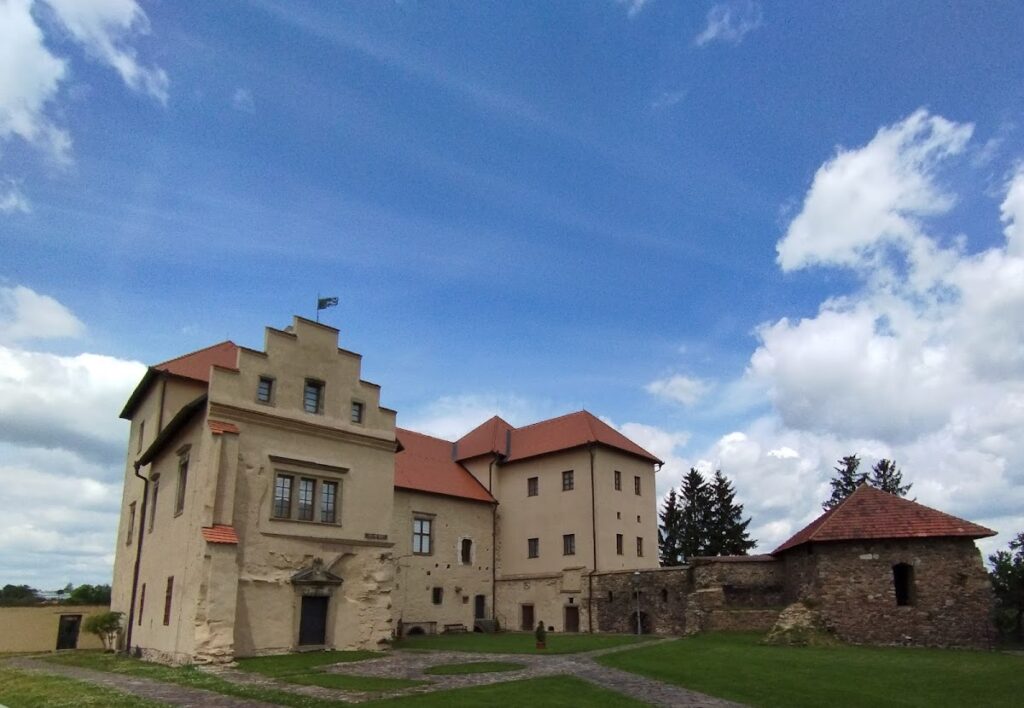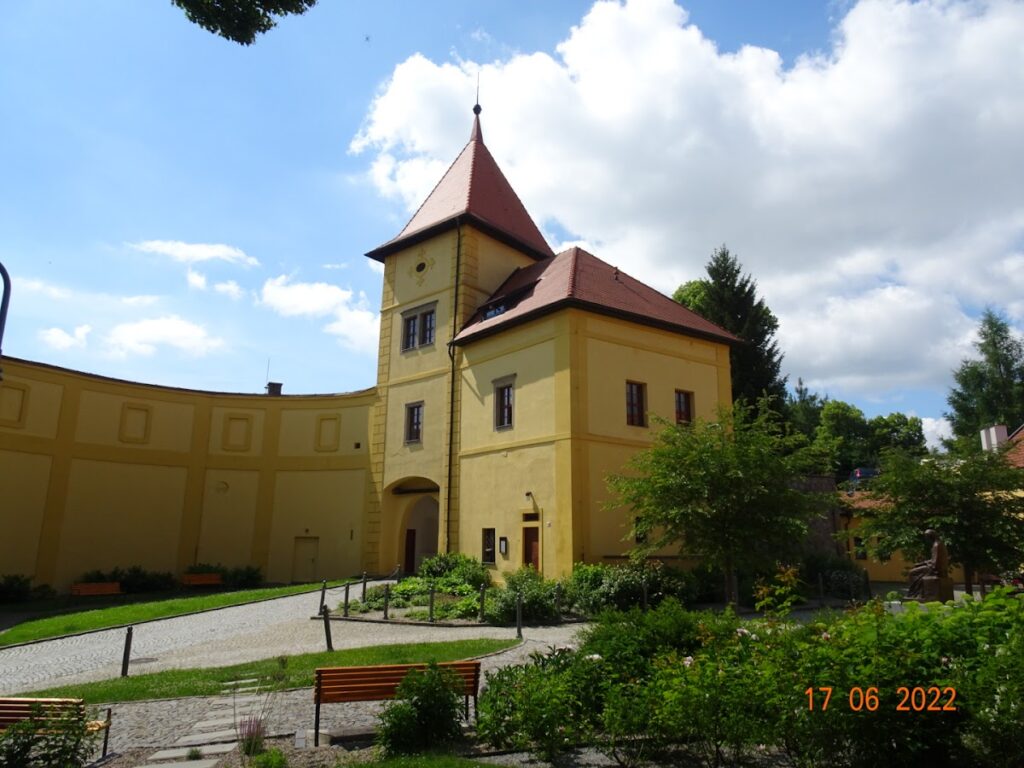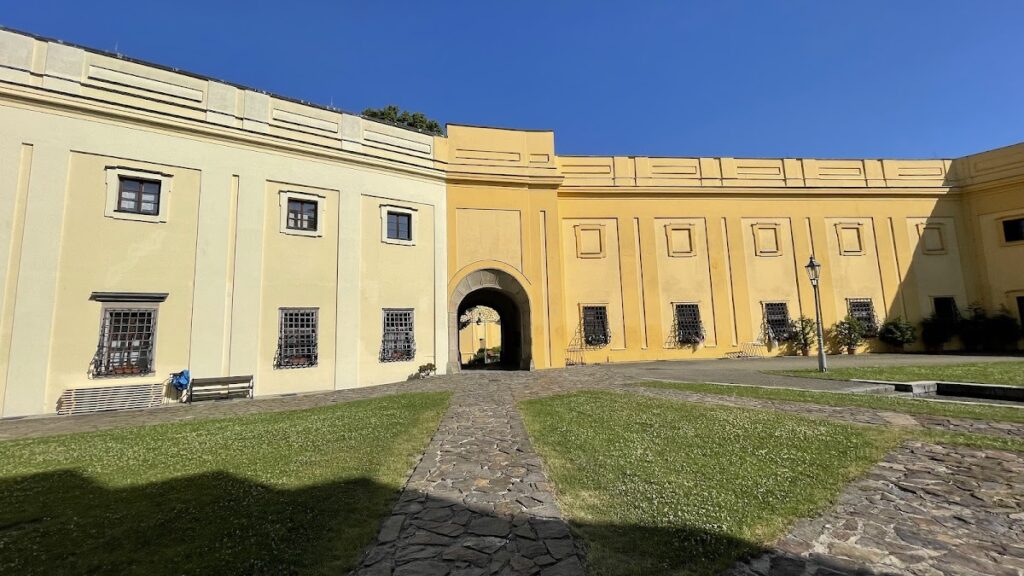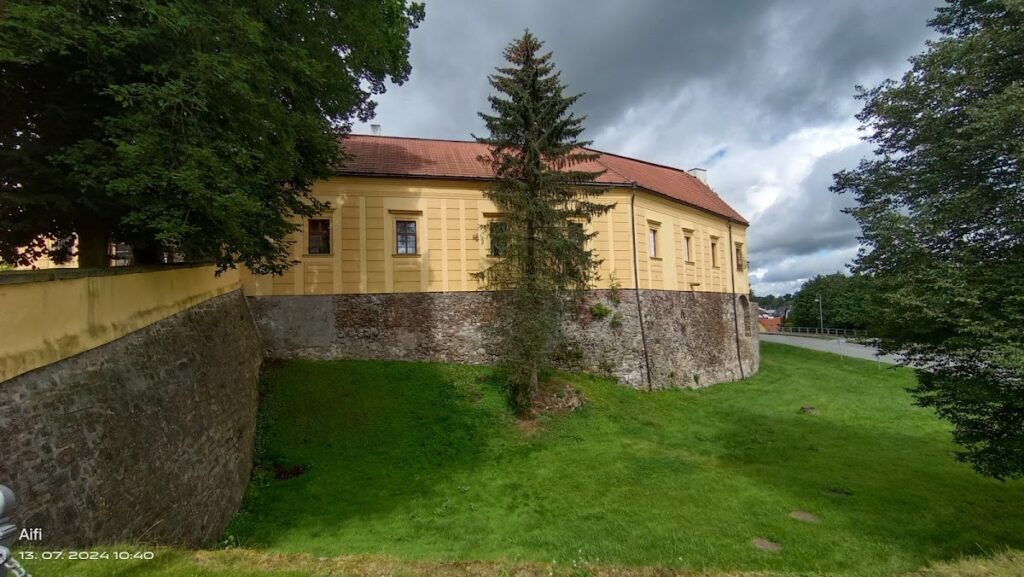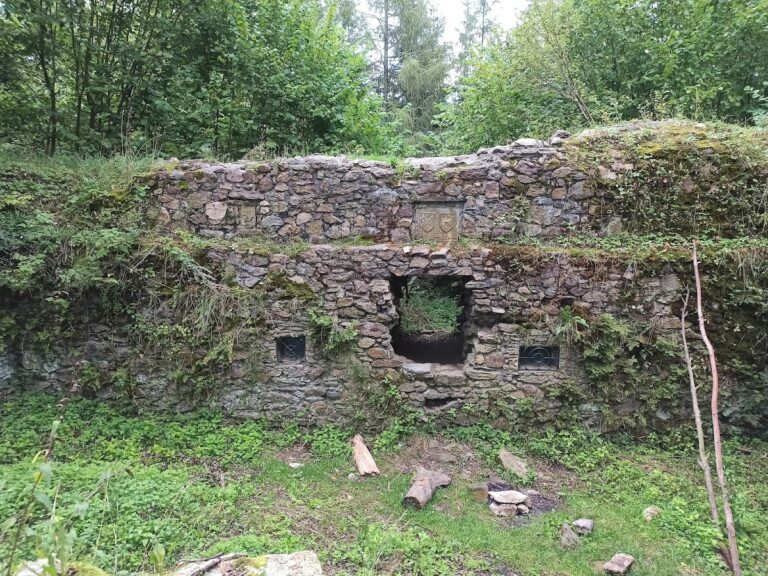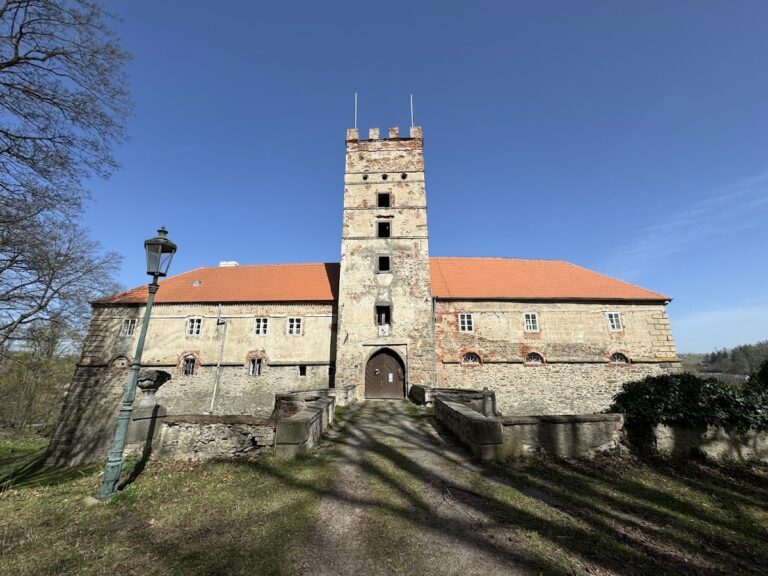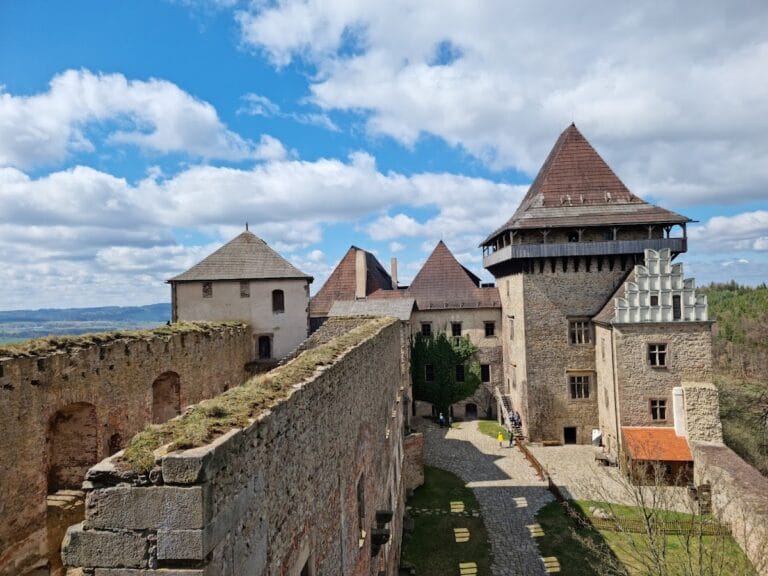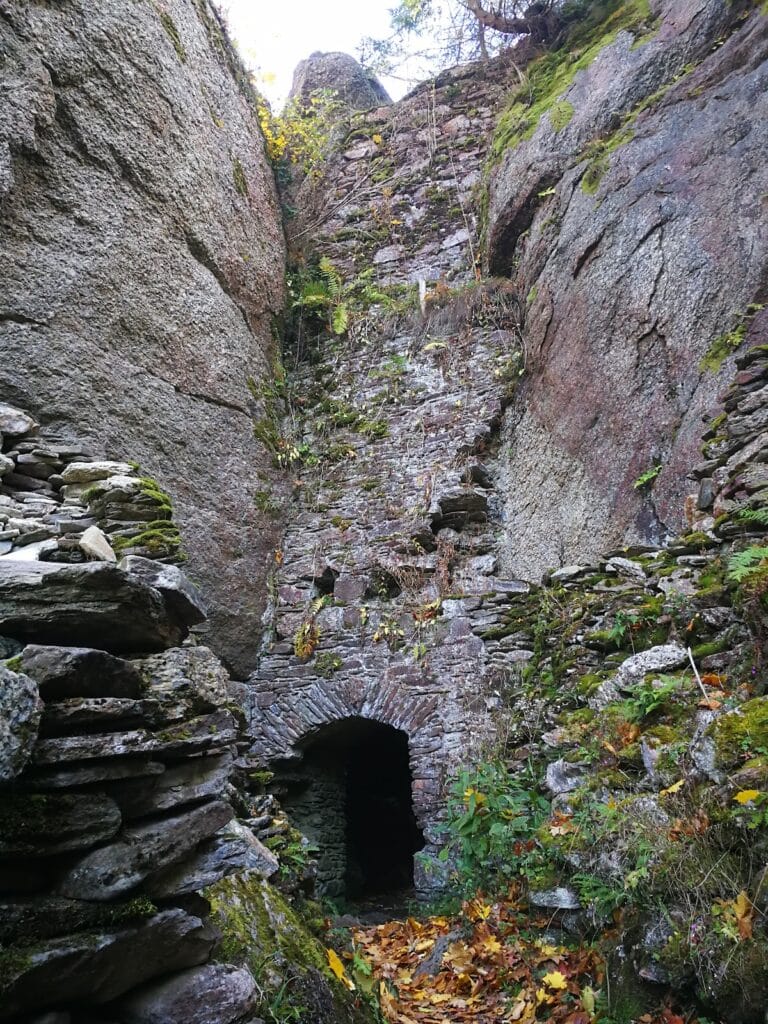Polná Castle: A Historic Medieval Fortress in the Czech Republic
Visitor Information
Google Rating: 4.7
Popularity: Low
Google Maps: View on Google Maps
Official Website: www.muzeum-polna.cz
Country: Czechia
Civilization: Unclassified
Remains: Military
History
Polná Castle, located in the town of Polná in the Czech Republic, was originally established by medieval Bohemian nobility. Its construction dates back to the early 14th century, around 1320, when Jindřich of Lipé built the fortress on a promontory overlooking the meeting point of the Šlapanka stream and Ochozský brook. The castle’s initial role was to secure an important land route in this region. The earliest written record of the castle appears in 1356, documenting the estate’s transfer from Čeněk of Lipé to Ješek Ptáček of Pirknštejn.
During the turbulent Hussite Wars in the 15th century, Polná Castle remained under the control of the Lords of Pirknštejn. In this period, the fortress was significantly expanded into a large Gothic stronghold, serving as the administrative center for the Polná estate, which later became known as Polná-Pribyslav. Defensive works were also extended to include nearby bodies of water, particularly the Peklo pond, which survives to this day.
From 1464 until 1515, the Knights of Kunštát held Polná Castle. In 1468, King Jiří of Poděbrady made the castle his temporary residence during military operations. This era saw the reconstruction of the western wing, marked by architectural details such as a door portal bearing the Kunštát family coat of arms and the development of a knight’s hall featuring heraldic vaulted ceilings.
The castle came under the ownership of the Lords of Hradec in 1553. After a fire damaged the site in 1584, it underwent a Renaissance-style renovation, transforming the fortress into a chateau. Restoration efforts included work on the old palace and the Kunštát hall, introduction of Renaissance windows, and the construction of the Hradec House. A written report from 1622 describes the castle as containing seven richly decorated chambers, a tower, and well-furnished living spaces.
In 1623, the Ditrichštejn family took possession of Polná Castle. Cardinal František of Ditrichštejn led repairs on the entrance gate tower, commemorated by a Latin inscription still visible today. The castle suffered severe damage during two Swedish military incursions in 1645 and 1647, when it was set on fire. Between 1690 and 1693, Ferdinand Ditrichštejn directed a Baroque-style reconstruction that added new eastern and southern wings around the inner courtyard to replace buildings ruined in the earlier conflicts. This phase also introduced a stone fountain and an upgraded water supply system completed in 1693.
The 18th century brought further challenges, including a major fire in 1734 and military occupation by French forces in 1742, followed by additional damage in 1744. Reconstruction from 1744 to 1751, overseen by architect František Antonín Grimm for Maxmilián Karel Ditrichštejn, included a new entrance portal and refurbishment work. By 1753, the castle’s use had shifted to housing estate officials rather than serving as a noble residence.
A devastating fire in 1794 destroyed most of the Renaissance four-wing complex, sparing only the western wing. The fire also led to the removal of the highest floor and the castle chapel. Surviving parts of the northern wing now lie beneath ground level as cellars. The Red Tower, a prominent cylindrical stone structure, disappeared completely after this event. In 1808, the seat of the estate moved to Přibyslav, leading to the castle’s gradual abandonment. It was repurposed for agricultural uses and residential apartments, while local inhabitants quarried stones from the ruins for construction elsewhere.
Historically, a manorial brewery operated at the site from 1712 until 1927, providing competition to the brewery in the town of Polná itself.
In 1922, Václav Pojmon purchased the castle and donated it to the local Sokol organization and municipal museum association. Architect K. Hilbert directed renovations that restored the first floor of the surviving western wing, creating three halls named after prominent former owners: Pirknštejn, Hradec, and Kunštát. After 1960, Polná Castle became a branch of the Vysočina Museum based in Jihlava, where exhibitions include displays on the Czech national revival, a historical merchant’s shop, and an old pharmacy. Further restorations took place during the 1970s and between 1985 and 2004, with part of the castle adapted for hotel and restaurant use.
Local tradition links the castle to legends about hidden treasure and a pact with the devil made by Jan Kašpar Khautz, a former estate manager. According to legend, Khautz avoided damnation by posing an unanswerable question to the devil. His burial site is located in the crypt of the Polná deanery church, while a plaque originally from his coffin is now displayed in the castle museum.
Remains
Polná Castle is situated on the western edge of the historic center of Polná, positioned above the Peklo pond. The castle complex is organized around a central inner courtyard, which historically served as a hub within the fortress. Today, visitors can enter the site through the remains of an outer passage or via a preserved gate tower on the side facing the Kateřinské suburb. This gate tower stands three stories high and bears a Latin inscription commemorating reconstruction work ordered by Cardinal František of Ditrichštejn in the 17th century.
The inner courtyard is enclosed on the north and west sides by a defensive wall, featuring a bastion at the northwest corner. The surviving western wing of the castle was originally part of a larger four-winged Renaissance cloister-style palace and now exists as a two-story structure. Archaeological work has enabled the approximate reconstruction of the foundations of other original buildings around the courtyard, revealing the former layout of the complex.
Within the western wing, the first floor has been carefully restored to showcase three main halls, each named to honor key noble families that once owned the castle: Pirknštejn, Hradec, and Kunštát. Of particular note is the Kunštát hall, which contains an intricately decorated cross vault adorned with several heraldic coats of arms, reflecting the hall’s medieval origins and noble associations.
Historically, the castle featured a large cylindrical tower known as the Red Tower. This prominent structure was depicted in a 1617 illustration by Joris Hoefnagel but was lost following the catastrophic fire of 1794. The tower’s robust construction once contributed significantly to the castle’s defense system.
The castle’s inner courtyard saw substantial Baroque modifications during the late 17th century, including the addition of eastern and southern wings. These new structures replaced buildings destroyed by Swedish military attacks in the 1640s. This period of renovation also brought the installation of a stone fountain and a new water supply system, completed in 1693, which improved the daily living conditions within the castle.
Beneath the site of the former northern wing, which housed a chapel and an arcaded corridor, remain extensive cellars. These substructures survived the destruction of the upper parts of the wing, including the chapel itself, which was demolished after the 1794 fire.
The castle grounds feature cultural monuments connected with local history, such as a statue of the notable Czech writer Božena Němcová created by sculptor Jan Adolf Vítek. Museum exhibitions are housed in the retained and restored sections of the castle, offering insights into the site’s historical development and various periods of occupation.
Together, these architectural and archaeological elements illustrate the complex layered history of Polná Castle, reflecting centuries of medieval and early modern fortification, noble habitation, and adaptation to changing times.
